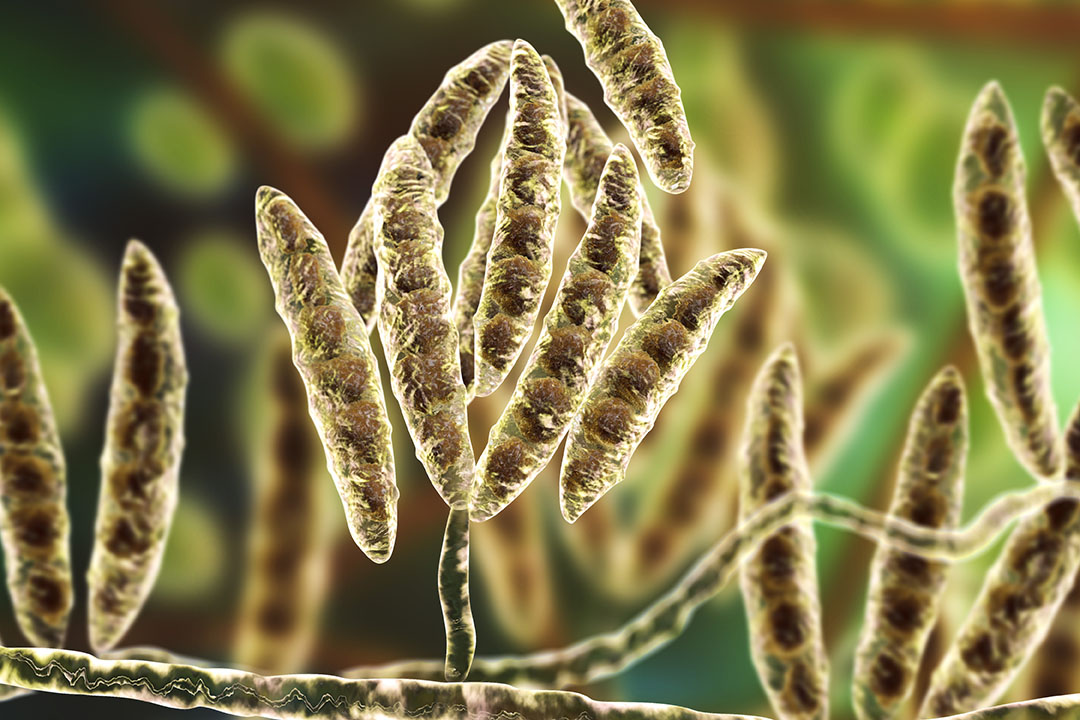New bacteria strain isolated to reduce zearalenone

Several physical and chemical technologies are used for inactivation or elimination of the mycotoxin zearalenone. A new bacteria strain that can reduce this mycotoxin has now been added to the list.
Zearalenone (ZEA) is produced by various strains of the genus Fusarium, most notably Fusarium graminearum, Fusarium culmorum and Fusarium cerealis. The growth of Fusarium is affected by various factors (temperature, moisture content of grains, microbial interactions, etc.), and a large amount of ZEA can accumulate in mouldy crops and cereal-derived food products, which frequently leads to reproductive abnormalities of domestic animals and occasionally in hyperoestrogenism in humans.
Benefits of biotransformation
Due to the oestrogenic effects of ZEA in agricultural products used for animal and human consumption, an efficient technology for ZEA detoxification is urgently required. During the recent decades, several physical and chemical technologies used for inactivation or elimination of ZEA have been reported. Nevertheless, few of these technologies have completely fulfilled the essential safety, efficiency and cost requirements, such as microbial adsorption, sorbent adsorption and oxidative degradation. Biotransformation is considered as a cost effective and environment-friendly solution for removing ZEA, without damaging the feed nutrition. Previously, some ZEA-degrading bacterial strains and key enzymes related to the ZEA biodegradation were investigated.
Bacteria from chicken intestine digesta
New research, published in the World Mycotoxin Journal, looked at microbial reduction of zearalenone. For this, a pure culture of strain ZJ-2016-1, identified as Lysinibacillus sp. by 16S rRNA gene sequence analysis methods, was isolated from chicken large intestine digesta. To determine the effect of reaction time of ZJ-2016-1 on the elimination of ZEA in Luria Bertani (LB) broth, 10 ml of LB broth containing about 30 μg/ml ZEA was inoculated with 0.1 ml of an overnight culture of ZJ-2016-1 (3.4×1010 cfu/ml). The control group was prepared in the same way without bacterial cells. The incubation was performed at 37°C in a rotary shaker at 200 rpm for 48 h. During incubation, samples of 300 μl were collected at 0, 12, 24, 36 and 48 h, respectively. All experiments were carried out in triplicate.
Strong ability in removing ZEA
The average reduction rate of ZEA was 0.625 μg/ml per hour, indicating that ZJ-2016-1 has a strong ability in removing ZEA. Heating treatment significantly reduced the removal rate of ZEA from 95.8 to 10.4% in the culture supernatant, suggesting that the microbial reduction of ZEA was likely enzymatic. The optimal conditions for the microbial reduction of ZEA by ZJ-2016-1 included temperature of 37°C and pH of 7.0. Based on these findings, the researchers say that the Lysinibacillus strain is a promising bacterium resource for reducing ZEA, and its genes and enzymes involved in microbial reduction of ZEA should be further explored.
Project MyToolbox
The study was supported by National Key Research and Development Program of China (Grant No. 2016YFE0113300) and Fundamental Research Funds for the Central Public Welfare Research Institutes (Grant No.1610382017017). Furthermore, the study was part of the cooperation with the European Union’s Horizon 2020 research and innovation programme under grant agreement No. 678012 (project: MyToolBox).











